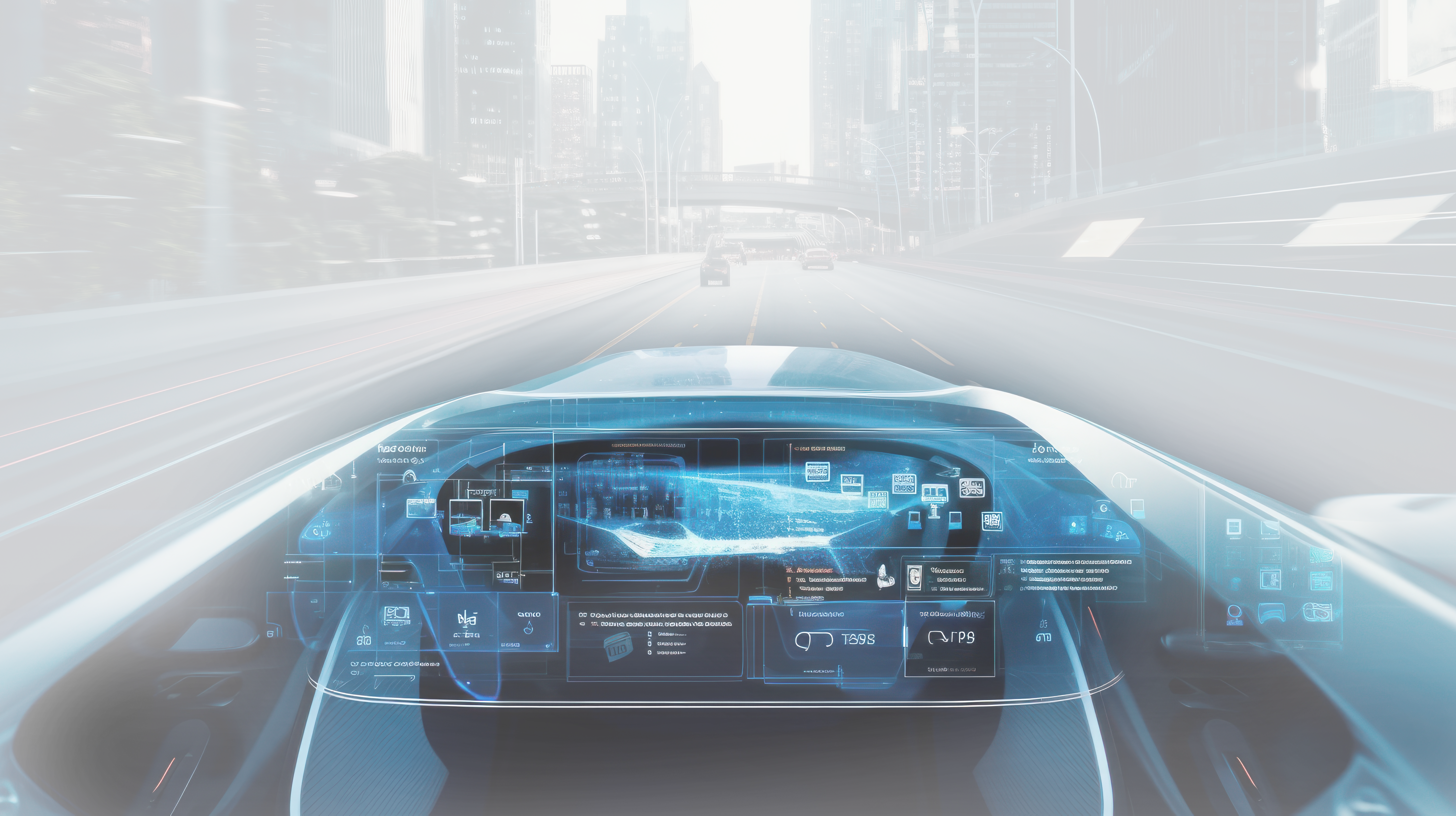The As-A-Service Revolution: How Drivers are Becoming Subscribers
October 13, 2022.webp)
Does anyone remember life before Amazon or the range of Apple services like news, TV, and music? Subscription-based services have become such an integral part of our lives that it’s hard to imagine any other way. The subscription revolution started with the shift in entertainment, with Netflix replacing Blockbuster and Spotify changing the face of music playing to a monthly subscription model. (And that was after Napster was dethroned by iTunes back in the ‘olden days when you bought Albums and songs a la carte on iTunes from Apple.)
But the subscription trend continued to grow, reaching across industries, including transportation. Bird, Lime, and other electric mobility companies allow users to rent scooters and bikes in many major metropolitan areas, changing the lives of commuters, tourists, and everyday citizens.
In the midst of its own revolution, the automotive industry is also well-poised for disruption by a move to the subscriber model. We are already seeing the beginning of this trend with the development of software-defined cars that are upgradeable in a seamless way more akin to smartphones than to the vehicles of the past, paving the way for drivers to customize and enhance their driving experience using downloadable services, or automotive apps.
For OEMs, the smartphonization of the vehicle to include a subscriber model app-store offers new, innovative revenue streams, opportunities to enhance customer loyalty and ultimately, creates a new type of OEM-driver relationship. Consumers are already accustomed to subscription models as mentioned above, but two questions are yet to be answered: Are the conveniences offered by subscription-based services worth the price tag? How should OEMs develop “Mobility-as-a-Service” in a way that will attract consumers while also being profitable?
Vehicle Subscriptions Already Exist
In many ways, consumers are totally new to the idea of subscription services in the automotive space. For example, Uber’s 91 million monthly riders worldwide and Lyft’s 30 million North American users have made ride-hailing apps as common as taking a taxi once was.
Car rentals and leasing have seen tremendous growth fueled at least in part by the pandemic and more people working from home with a lesser need to purchase a car. The leasing and rental market, which allows full vehicle access and features without having to lay out a large down payment or cover ongoing maintenance costs, is expected to see an 8% growth rate and reach $421 billion by 2023.
There are also companies like Zipcar with over a million subscribers in cities around the world. Zipcar, Car2Go, Turo, and the like enable users to pay a subscription or per-use fee in return for access to a car when and where they need it for short periods of time. Rather than paying thousands of dollars to maintain a car, drivers only pay one-time running costs like gas, tolls and a proportionate amount of fixed costs like insurance.
As electric vehicles become more predominant, we might start to see more traditional ICE vehicle owners turn to subscription services to test the waters of using an electric vehicle before taking the plunge and purchasing one. Experts believe that by 2025 20-30% of all new car “sales” will be subscription-based. Clearly, the traditional ownership or leasing models for vehicles are not a must for many drivers.
A Customized Driver Experience
Customization and convenience might be two of the biggest benefits that drivers demand that are not widely available for many vehicles today. They want their driving experience to be personalized with immediate access to new features as they become available, but this has historically been an impossibility. Automakers are catching on and are realizing that they can give customers what they want, when they want it, and charge a premium for the privilege.
It’s not only new players in the auto industry, like Tesla or NIO that are changing the business relationship between drivers and OEMs. Even some of the most well-established players like Audi, BMW, and Cadillac, to name a few, are experimenting with charging subscription payments for certain features. It’s too early to tell how drivers will respond, but there is reason to believe that paying for premium features in a car will be embraced by consumers. People are attracted to subscription-based services because of the flexibility and the freedom to cancel when they want or upgrade if new improvements are available.
Subscriptions give drivers the flexibility to choose to pay for the features they want and forgo others. The ongoing revenue stream can support OEMs efforts to continuously upgrade and improve features, pushing out the updates automatically.
While automakers are currently focused on offering drivers the customized experience they want in their own vehicles, the next step will be allowing drivers to “save” their preferences as driver profiles and access them from any vehicle.
The Future of MaaS (Mobility-as-a-Service)
It is clear that the automotive industry is shifting from a purely product-focused model (i.e. producing and selling cars) to one where automotive services play a key role. The fact that this shift is coinciding with a move to electric vehicles is timely and gives automakers the opportunity to offer a new way for consumers to pay for their car usage.
The days of purchasing a car with factory-installed features that are set in stone are coming to an end. In the very near future (and in some cases, today), when a customer drives a car off the lot their relationship with the automotive manufacturer has just begun. OEMs will provide ongoing, over-the-air updates to key features for a price. This will go a long way towards ensuring that drivers remain loyal to the brand they purchased from - in much the same way as iPhone users remain in an ongoing purchasing relationship with Apple products. The upside for the drivers is the extension of the lifetime of the car - they can simply upgrade features without having to purchase a whole new vehicle.
GM is a great example of an OEM successfully incorporating subscription services into their vehicles, as they recently announced to investors an expectation of an additional $20-35 billion in annual earnings from subscriptions by 2030. Right now those services are tied to the car, but the future lies in making them connected to the driver and portable between shared vehicles.
What Does This Mean for OEMs?
OEMs are walking a fine line - they are at the precipice of a major revolution with the move to electric vehicles and software-defined vehicles. They need to maintain and grow their customer loyalty while also staying competitive and profitable.If drivers want their cars to follow the same path as computers and smartphones with the ability to download updates and upgrades, they must expect a change in the way they ‘buy’ and use vehicles. The OEMs should be aware of this, but also keep in mind that suddenly charging for features that have always been considered standard or that are key to safety may not go over well in the eyes of consumers. Subscription services, perhaps, are better suited for newer breakthrough features like performance increases.
As we’ve already mentioned, a software-based vehicle will create profitable new revenue streams for OEMs. In fact, according to McKinsey, data-driven services could create up to $1.5 trillion in additional revenue for OEMs. It is much cheaper to create new or upgrade existing software than it is to produce and sell a whole new vehicle. The lower production costs combined with the increased revenue from subscription services translates to increased profits. The competitive advantage for the OEM will be a wide selection of features, with some that drivers might never have thought possible in a vehicle, and a seamless experience in choosing, downloading, and enjoying the services (i.e. advanced speaker/audio capabilities, geofencing).
Having their finger on the pulse of consumer behavior and really understanding their customers will be key to the adoption of subscription-based automotive features. Given the popularity of car-sharing, rentals, and leasing, it is only logical for OEMs to plan to bring all ‘mediums’ of using a vehicle under one profile or account instead of disparate driving experiences. This enables drivers to have the experience they want regardless of which car they are in, and the automakers can reap the benefits of the subscription revenue.
The Bottom Line
Subscriptions are the wave of the future, providing significant benefits for automakers and drivers. Consumers are already used to the subscription model in their daily life will be willing to adopt app subscriptions when it comes to their cars, as long as they are not expected to pay for features that are considered standard.It will take some trial and error for automakers to learn how best to strike the balance between innovation and familiarity but by being attuned to market demands and responding in a consumer-centric way, OEMs will be able to quickly respond to market needs and ever-changing demands, ultimately provide the safest, most enjoyable and personalized experience for drivers.






